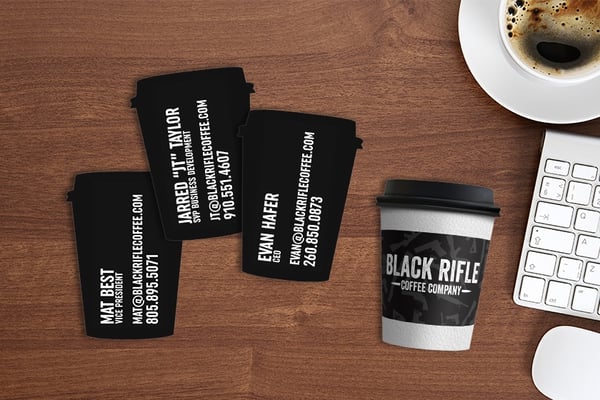
Brand loyalty is a think tank concept that was developed in the 1950s. It was used to encourage customers to buy from a single retailer. During a thirty-year test phase there were three promotions used to support purchases from specific brands:
- Gas
- Food
- Airline Miles
Fast forward to 2013, and you’ll see not much has changed; statistically speaking.
Those three groups still make up half of the most popular loyalty programs. According to marketing group Little & King, 12-to-15 percent of shoppers remain loyal to a single retailer. That comparatively minimal percentage makes up for 55-to-70 percent of that retailer’s sales. Nearly 80 percent of customers will participate in a promotional deal from one of their trusted brands on a weekly basis. Moral of the story: business is good when you are a household name.
How do you reach the coveted brand-name status? At Plastic Printers, we have a theory: it all depends on the logo.
The “Face” that Launched 1,000 Sales
Sales may not be a blood sport of mythical proportions, but it is highly-volatile and mercilessly competitive. In a sea of thousands of brands, you have to come up with something that differentiates your business while simultaneously “selling” it to potential customers. You have to present your professional “face” to the world. The best tool at your disposal: your logo.
Think of some of the most well-known symbols out there: the golden arches, the police business card, and the Nike swish. All of these symbols are instantly recognizable. Each has also cultivated its own loyal following. Who doesn’t dream of growing up to be a police officer or a professional athlete? As for the golden arches, an estimated 20% of the population has worked for the iconic franchise during their lifetime - that’s 60 million people.
Loyalty and recognition are one thing, but the established brands also know better than to change what works. Their signature is in their logo, their famous menu items or product lines, and their select customer base. Change any of that and the public outcry is imminent. So how did they develop this collective “front of the mind” retention? Experts say, the en-mass response relies on three things. Whether it’s a police business card or a designer label; it must:
- Be distinctive enough to catch a buyer’s attention and stand out from the competition.
- Be instantly recognizable.
- Be legible in all sizes from business cards to billboards.
We can’t speak for the billboards, but when it comes to business cards, Plastic Printers has you covered.
Making a Meaningful Connection
Our company understands the secret to great logo design is making a connection with your customers.
That connection can be simple or complex. The important thing is that it makes a lasting impression. It’s OK if your logo needs time to establish a consumer association. We can’t all have the immediate adherence that a police business card produces, just don’t allow your logo to become outdated while you’re waiting for it to grow on people. Here are some business card rules that we suggest:
- Make sure the logo reflect your company’s mission and/or personality.
- Eliminate unnecessary elements that are too busy or distracting.
- Stay away from what’s trendy. Your logo will quickly become outdated.
- Multiple levels of interpretation are good, but when in doubt, keep it simple.
- Make sure the design is transferrable to all formats from cards to websites, to a mobile platform.
- Never be afraid to ask for help.
Plastic Printers has been in the design business for over 20 years. We know what makes a good logo. You can trust our team to guide you through the development process from start to finish. Contact us; your journey to brand loyalty starts here: www.plasticprinters.com.